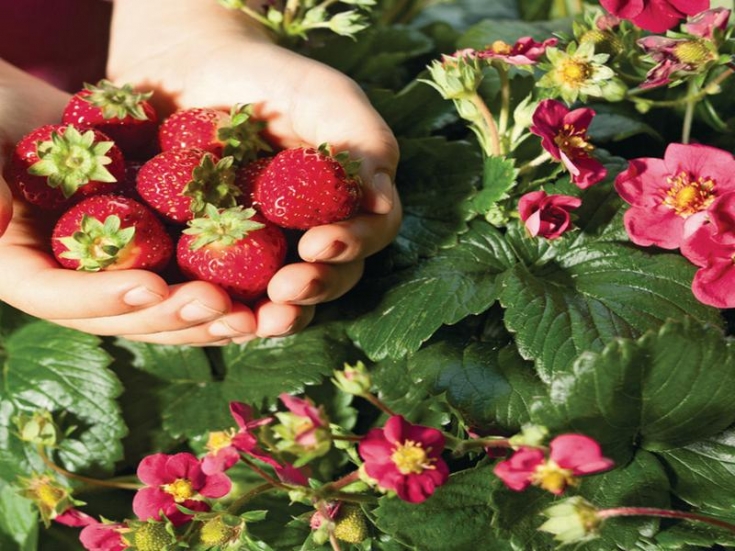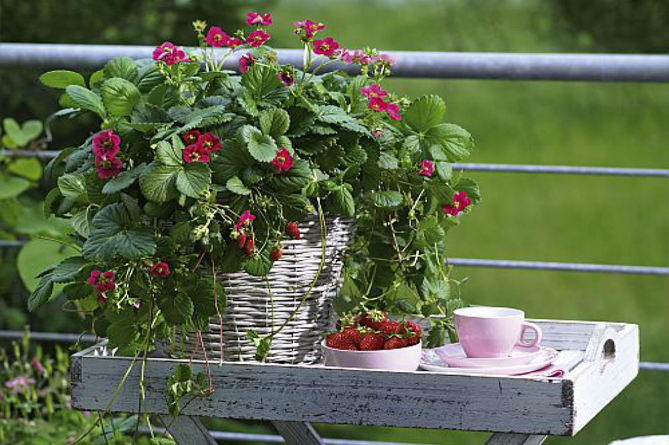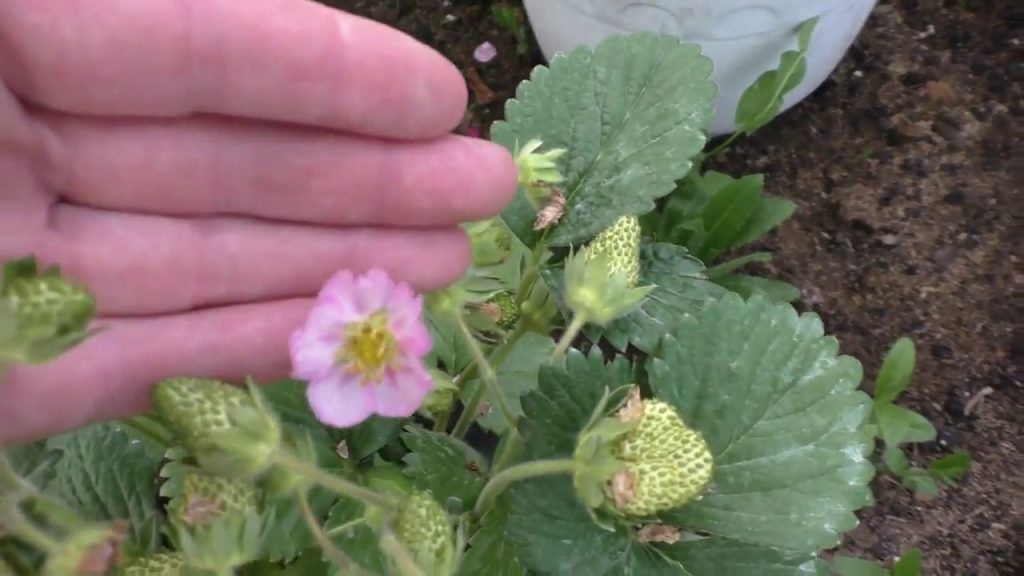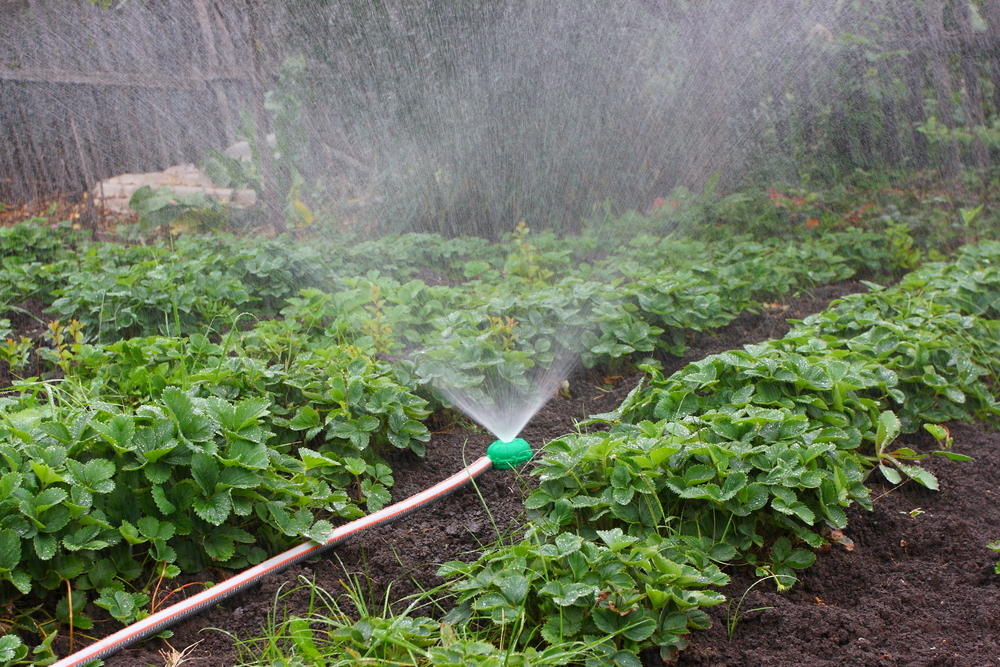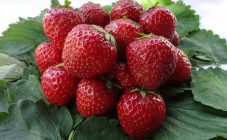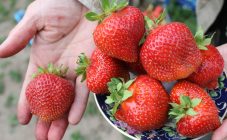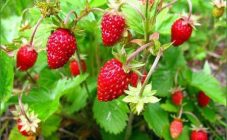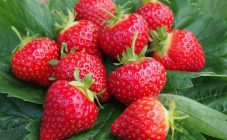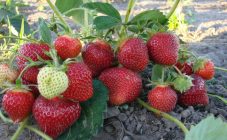Content:
Repairing strawberry varieties always attract the attention of gardeners. Many express a desire to have them on their site. With the development of a new F1 hybrid called Tuscany strawberry, it has become possible to grow this crop even in pots for decorative purposes. This variety opens up completely new possibilities.
History of creation, subspecies
Toskana Rose strawberries are a real "bomb", which is just beginning its march across Russia as an "edible decoration". In European countries, it has been in demand since 2011. It was in this year that strawberries won the prestigious annual FleuroStar award in the Netherlands and became the absolute winner.
The remontant strawberry Tuscany was bred by Italian breeders from the strawberry varieties Fragaria, which have been cultivated in France since the 18th century. It belongs to the group of perennials from the Rosaceae family.
Characteristics and features of the variety
None of its predecessors is suitable for the description of the Tuscany strawberry variety, because this is a completely new class of hybrids with a new color of flowers. The main characteristic of the hybrid is pink and very large (up to 4 cm) flowers. This is what distinguishes this variety from other varieties of strawberries, usually with white flowers.
The flowering of a strawberry bush ends with the formation of large cone-shaped fruits weighing from 30 to 40 g. The taste of berries on a 5-point scale is estimated as a high indicator of 4.5 points. The berries are dark red in color, with a pronounced strawberry flavor (sugar, with a slight sourness) and a pleasant aroma.
The ampel type of low garden strawberry with dark green, spreading leaves grows up to 20 cm high. Shoots reach a length of 1 meter.
The hybrid throws out a lot of flowering whiskers, which look very decorative in suspended planters. The culture blooms and bears fruit profusely, from mid-spring to the first autumn frosts. One bush of an adult remontant strawberry can produce up to 1 kg of medium-sized berries.
This strawberry variety tolerates frost and short-term drought well. For the winter, stationary plantings of Tuscany in the beds should be covered with improvised material.
In the case of growing this variety of remontant strawberries in pots, or other portable containers, it is recommended to cut off the aboveground part in autumn when temperatures drop to 10-12 ° C, and place the plant in a cool (10-18 ° C) dark place for wintering. At this time, the bushes are rarely watered and in small volumes, trying to avoid waterlogging the soil in pots.
In the spring, when persistent heat is established on the street, the containers with strawberries are again taken out to their former bright place in the garden.
It is important to know that a good harvest of berries from one bush can be harvested in the first 2-3 years. In subsequent years, the yield of the variety decreases, so the plantings are renewed, planting young plants in new fertile soil.
Features of agricultural technology varieties
The usual breeding method in Tuscany is vegetative, with rosettes forming at the ends of the mustache.The main disadvantage of this method is that the mother bushes transmit to their young bushes various viruses that the Toscana Rose strawberry is susceptible to.
Seed propagation is used more often, which allows for healthier seedlings. The only drawback is the general short-term germination of seeds, so when buying, you should definitely pay attention to the date of their packaging.
For growing by seeds, use the following algorithm:
- Prepare the soil by mixing peat, leafy soil and sand in equal parts.
- In small containers (you can use plastic containers with lids), spread the prepared soil mixture and moisten it.
- Seeds are sown, deepening them by 1-2 mm, and moistened.
- Cover with a transparent lid or foil, place in a warm place with a temperature of 22-24 ° C.
- Airing is carried out daily.
- When friendly sprouts appear (after a week), the container is placed in a bright place. This will prevent the seedlings from being pulled out. Airing is increased over time, allowing the plants to gradually get used to the drier air.
- Remove the film.
- Water the soil only when it dries up, thereby preventing black leg disease.
- A month later, after the appearance of 3 leaves, they are seated in pots, watered moderately.
- After 30 days, the seedlings are transferred to a permanent place for further cultivation (hanging pot d = 25 cm or garden bed). Do not forget about the drainage layer.
Soil, watering and hardening of strawberries
The culture does not like when the root system dries up for a long time, especially since the volume of water in pots is limited. To retain water longer, the soil is mixed with special hydrogels. For this purpose, containers can also be installed in pallets specially selected for the required dimensions.
In the spring, before planting strawberry seedlings in the ground, they are hardened. To do this, reduce watering, more often take it out to an open loggia or terrace. The transplant is carried out in May, when stable above-zero temperatures allow.
Tuscany strawberries, like other varieties, prefer slightly acidic and neutral soils with a pH of 5-6. The composition of the soil should be sandy loam or loamy with a good humus content. Podzolic soils must be enriched with mineral and organic fertilizers. To do this, it is enough to add 1 sq. meter 3 tbsp. l. azofoski and a bucket of leaf humus.
After planting, you can mulch the soil with grass without seeds or with a special dark, breathable material that is sold in agricultural stores.
Although Tuscany strawberries are drought-resistant, young plants should not be allowed to dry out. For the successful growth and further fruiting of plants, you need to try to regularly water the plantings. When watering, the state of the strawberry outlet is monitored so that it is not covered with earth.
Care features
Caring for strawberries in Tuscany is not a big job and differs from caring for ordinary strawberries only in that it requires enhanced feeding. Long-term fruiting can weaken the culture, therefore, the introduction of mineral and organic fertilizers during the growing season in summer will help to overcome any unforeseen situations.
When the soil of the garden plot is depleted, it will be necessary to apply top dressing often (monthly): during planting in the spring, when the peduncles are extended, during flowering, fruiting and after its end in the fall. In the case when Tuscany strawberries are sufficiently fertilized and bear fruit for 2 and 3 years, they are limited to three dressings - before flowering, in mid-summer and in September (after fruiting).
What fertilizing are needed
The best feeding for strawberries is organic and mineral complexes. The main thing is to correctly introduce them at the time necessary for the plant.At the beginning of flowering, nitrogen-containing fertilizers are required for the growth and fruit setting. Their next introduction will be required in the fall to bookmark the future harvest.
Strawberries are fed twice with potash and phosphorus fertilizers: in spring and autumn. And in the fall, when digging, they are brought in deeper than in the spring. Superphosphate promotes better root development, and potassium is essential for fruiting.
Instead of potash fertilizer, wood ash can be used. Before applying to the soil, it is allowed to mix ash with nitrogen fertilizer. When organic matter is introduced into the soil instead of mineral fertilizers, it is diluted with 1/10 of the water, if it is bird droppings, and ¼ of the water with animal manure.
When an element such as boron is lacking in organic matter, strawberries become deformed and become smaller. Excessive application of nitrogen to the soil in autumn leads to a deterioration in the winter hardiness of strawberries. An excess of potash fertilizers in the soil leads to an increase in chlorine, which destroys the berries. There is only one conclusion - it is required to control and comply with the fertilizer application rates.
Watering and diseases
Depending on weather conditions, water the strawberries as the soil dries up. Correct agricultural technology allows the culture to bloom and bear fruit throughout the warm season. It is best to water the plants at the root. To prevent the invasion of pests, strawberries can be sprayed with a 2% solution of Bordeaux liquid.
As a rule, remontant hybrids begin to bear fruit 150-180 days after sowing the seeds. Strawberries feel best in well-lit areas. Resistant to nematode and weevil.
Strawberries are distinguished by a high level of resistance to fungal diseases. The plant has good immunity and excellent resistance, therefore it is difficult to attack by diseases.
Advantages and disadvantages of the variety
Growing Tuscany strawberries in hanging baskets has several advantages:
- They take up small spaces.
- It is not only a decorative decoration, but also a useful food product.
- The culture is more resistant to damage by harmful insects and soil borne diseases.
- It is more convenient to harvest.
- In a suspended state, animals (hedgehogs and others) will not be able to eat berries.
- Hanging strawberry baskets can be easily protected from frost by placing them in a warm room, thereby prolonging fruiting.
The disadvantages of growing strawberries in baskets include:
- The need for frequent watering and the possibility of drying out the roots, which can affect fruiting.
- Annual soil renewal for a safe nutrition of the crop and a rich harvest of berries.
With the breeding of a new variety of Tuscany strawberries, new opportunities for its use as an ornamental crop open up. The fashion for such "edible jewelry" from Europe is spreading to Russian cities. This hybrid perfectly performs two-in-one functions.
